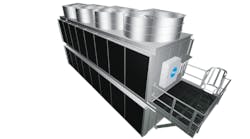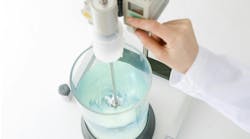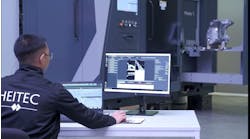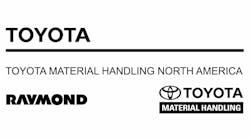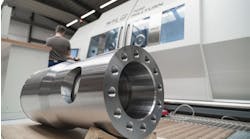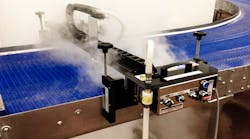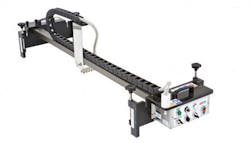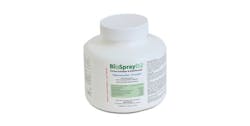Sanitation is serious business in the food industry. A single instance of contamination can result in illnesses, recalls, fines, and expenses to correct the problem. The negative publicity associated with a sanitation-related issue can have additional long-term consequences for food & beverage manufacturers.
The potential for violations has increased significantly since the Food Safety Modernization Act went into effect in 2011, says Tim Kane, CEO of Goodway Technologies Corp., a manufacturer of industrial maintenance and cleaning solutions.
"The FDA (Food and Drug Administration) did not previously have access to facility records, but now the FDA has permission to review these records to initiate a recall or a facility shutdown," Kane says.
Food & beverage manufacturers may need to implement more stringent maintenance practices, including cleaning and sanitation, to comply with FDA standards. This means companies may want to consider new cleaning technologies, such as dry vapor steam cleaning and sanitation systems, that allow them to automate manual processes, Kane says.
Dry Vapor Steam Cleaning 101
One of the primary benefits of dry vapor steam cleaning is increased efficiency. Dry vapor steam cleaning produces vapor that typically contains about 5% moisture content. This steam is superheated and placed under pressure to provide more powerful cleaning and sanitation properties than manual processes, Kane says. It's a process that may also may be more environmentally friendly than other cleaning methods because it reduces water use and doesn't require chemicals.
"Substances such as stubborn grease, oil, dirt, and other residues can be cleaned from all kinds of surfaces, even small holes and crevices, without any need for chemicals," Kane says. "Additionally, mold, mildew, and a variety of bacteria and allergens are instantly eradicated leaving surfaces clean."
Typical applications include cleaning and sanitizing conveyor belts and other types of machinery used in food & beverage processing but can also include more generalized cleaning and areas that can harbor bacteria, such as floor drains. In other industrial environments, manufacturers use dry vapor steam to clean small parts, tubes, switches, sensors, moving parts, and areas that can't be reached with cloths or most other cleaning tools.
"Often with vapor steam cleaning, it's not even necessary to dismantle parts because this form of pressurized cleaning can push water through even the smallest holes," Kane says.
"Dry vapor steam is safe to use around electrical equipment as well as inside control panels. Cleaning is also accomplished easily during production times, which means you don't have to worry about downtime."
Other benefits related to dry vapor steam cleaning include increased conveyor reliability, increases in quality as hygiene improves, less water usage and waste, and potentially fewer safety incidents from ease of use compared to other cleaning methods.
A New Formula for Sanitation
While dry steam cleaning is an important step, food manufacturers should consider sanitizing with a sanitation formula, such as Goodway's BioSpray D2 food-grade sanitation system, to disinfect and sterilize the area, Kane says.
In June, Goodway boosted its cleaning and maintenance capabilities when it acquired the complete line of BioSpray Power Pack Systems from 1 Priority Biocidal LLC and distribution rights for the BioSpray D2 sanitation product.
In the food & beverage production industry, a Sanitation Standard Operating Procedure generally calls for a cleaning procedure to remove dirt, oils, and other" soils" and then a sanitation procedure to maintain cleanliness on the surface. The first part is using the dry vapor steam cleaners to perform a deep cleaning on processing equipment, packaging equipment, and all the areas of the facilities that require attention. After cleaning all of the equipment and surfaces, the second step is using the sanitation formula to sanitize, disinfect and sterilize the surfaces.
The BioSpray system can be up to 63% less labor intensive than manual application systems, such as wipes or bottle sprayers, according to Kane. It also uses up to 88% less sanitizing formula than other methods. Another advantage is consistency. It's a calibrated delivery system that helps ensure dwell times are met on challenging environmental surfaces.
The BioSpray Power Pack System, which delivers the formula, and BioSpray sanitizer can be used safely in most manufacturing and production environments, including dry-food production plants, health care facilities, and clean rooms, Kane says.
Goodway designed the BioSpray technology to safely atomize sanitizing, disinfecting, and sterilizing solutions to reach deep into hard-to-reach areas where pathogens hide.
"Environmental surfaces are not inherently flat, and therefore hard-to-reach areas can easily be missed or skipped with manual wiping and spraying, creating opportunities for pathogens to contaminate and flourish, and a false sense of quality assurance or infection control to persist," Kane says.
The ability to automate tedious cleaning processes helps food & beverage manufacturers achieve their business goals without sacrificing health or quality standards, Kane says.
"Many plants and facilities are seeing the pressure of profits and a shortage of workers, which means sanitation and maintenance workers are seeing an increase in job responsibilities and a greater workload," he says.
"But because of the new law requiring more careful and thorough cleaning, they need to find an efficient solution that meets these requirements."

